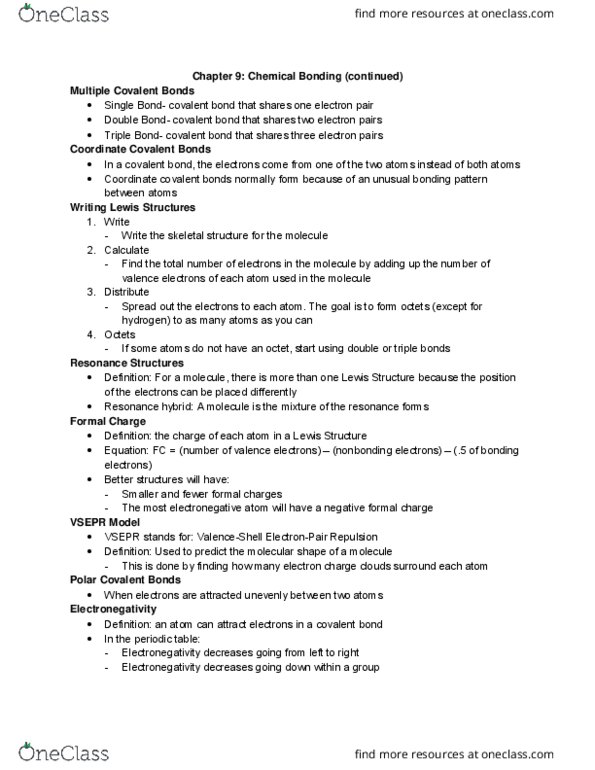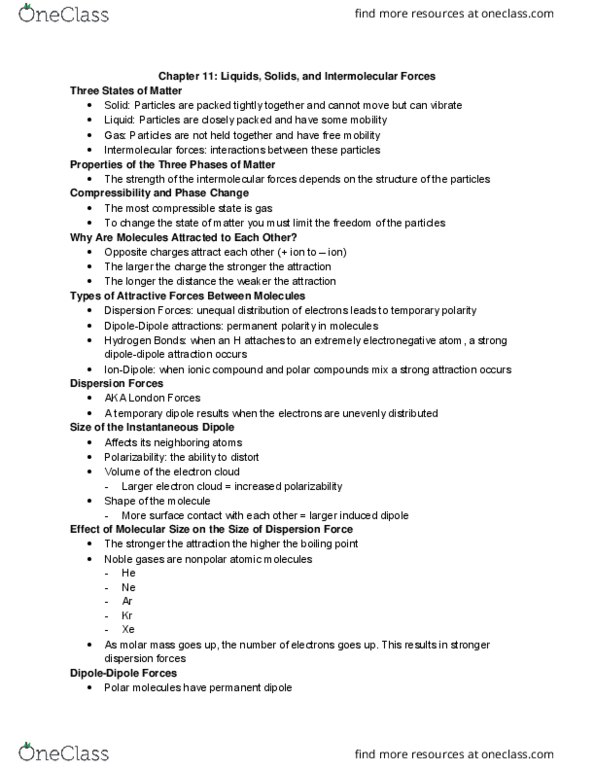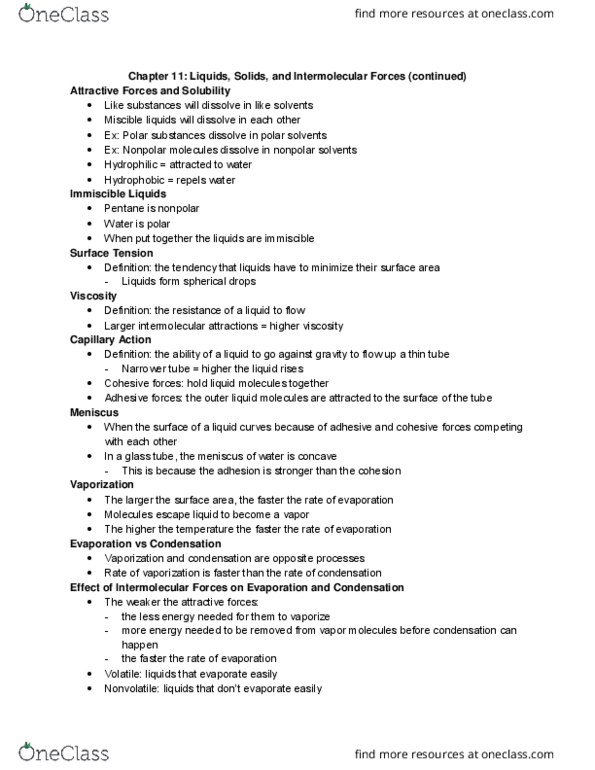CHM 111 Lecture Notes - Lecture 15: Intermolecular Force, Atomic Orbital, Chemical Polarity
CHM 111 verified notes
15/31View all
Document Summary
Three states of matter: solid: particles are packed tightly together and cannot move but can vibrate, liquid: particles are closely packed and have some mobility, gas: particles are not held together and have free mobility. Properties of the three phases of matter: the strength of the intermolecular forces depends on the structure of the particles. Compressibility and phase change: the most compressible state is gas, to change the state of matter you must limit the freedom of the particles. Why are molecules attracted to each other: opposite charges attract each other (+ ion to ion, the larger the charge the stronger the attraction, the longer the distance the weaker the attraction. Types of attractive forces between molecules: dispersion forces: unequal distribution of electrons leads to temporary polarity, dipole-dipole attractions: permanent polarity in molecules, hydrogen bonds: when an h attaches to an extremely electronegative atom, a strong dipole-dipole attraction occurs.





